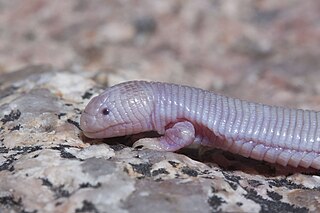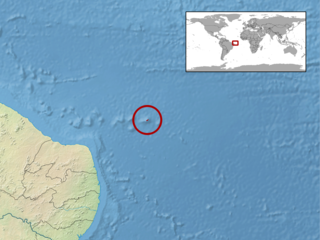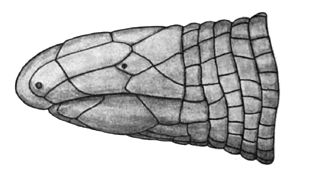
Amphisbaenia is a group of typically legless lizards, comprising over 200 extant species. Amphisbaenians are characterized by their long bodies, the reduction or loss of the limbs, and rudimentary eyes. As many species have a pink body and scales arranged in rings, they have a superficial resemblance to earthworms. While the genus Bipes retains forelimbs, all other genera are limbless. Phylogenetic studies suggest that they are nested within Lacertoidea, closely related to the lizard family Lacertidae. Amphisbaenians are widely distributed, occurring in North America, Europe, Africa, South America, Western Asia and the Caribbean. Most species are less than 6 inches (15 cm) long.

The Amphisbaenidae are a family of amphisbaenians, a group of limbless vertebrates.

Trogonophidae is a small family of amphisbaenians, containing five species in four genera.

The Mexican mole lizard, also commonly known as the five-toed worm lizard, or simply as Bipes, is a species of amphisbaenian in the family Bipedidae. The species is endemic to the Baja California Peninsula. It is one of three species of amphisbaenians that have legs.

The checkerboard worm lizard is a species of amphisbaenian in the family Trogonophidae. The species is monotypic within the genus Trogonophis, and is endemic to North Africa. Its natural habitats are temperate forests, Mediterranean-type shrubby vegetation, temperate grassland, sandy shores, arable land, and pastureland. It is threatened by habitat loss.

Amphisbaena is a genus in the family Amphisbaenidae, commonly known as worm lizards. Over 100 species are placed in this diverse genus.
Vanzolini's worm lizard is a species of amphisbaenian in the family Amphisbaenidae. The species is native to northern South America.

Amphisbaena ridleyi, known by the common names Ridley's worm lizard or the Noronha worm lizard, is a species of amphisbaenian in the family Amphisbaenidae. The species is endemic to the island of Fernando de Noronha off the coast of Brazil. It is one of two indigenous reptiles on the island.

Amphisbaena schmidti, known commonly as Schmidt's worm lizard or the Puerto Rican dusky worm lizard, is a species of amphisbaenian in the family Amphisbaenidae. The species is endemic to the Caribbean.

Cadea is a genus of amphisbaenians, commonly known as Cuban keel-headed worm lizards, in the family Cadeidae. Two species are placed in this genus. Both species are endemic to Cuba.

Geocalamus is a genus of amphisbaenians in the family Amphisbaenidae. Species in the genus are commonly known as worm lizards. Two species are placed in this genus, both of them endemic to East Africa.

Leposternon is a genus of amphisbaenians in the family Amphisbaenidae. Species in the genus are commonly known as worm lizards. 11 species are placed in this genus.
Mesobaena is a genus of amphisbaenians in the family Amphisbaenidae, commonly known as worm lizards. The genus is endemic to South America.
Monopeltis is a genus of amphisbaenians in the family Amphisbaenidae. Species in the genus are commonly known as worm lizards, even though they are not lizards. The genus is endemic to southern Africa. 19 species are placed in this genus.
Dalophia ellenbergeri is a species of amphisbaenian in the family Amphisbaenidae. The species is native to southern Africa.

The pestle-tailed worm lizard is a species of amphisbaenian in the family Amphisbaenidae. The species indigenous to southern Africa.
The Inirida worm lizard is a species of amphisbaenian in the family Amphisbaenidae. The species is native to Colombia and Venezuela.
Monopeltis sphenorhynchus, also known commonly as Maurice's slender worm lizard, Maurice's spade-snouted worm lizard, and the slender spade-snouted worm lizard, is a species of amphisbaenian in the family Amphisbaenidae. The species is native to southern Africa. There are two recognized subspecies.
The Vanderyst worm lizard, also known commonly as Vanderyst's worm lizard, is a species of amphisbaenian in the family Amphisbaenidae. The species is native to Central Africa. There are two recognized subspecies.
Dalophia welwitschii is a species of amphisbaenian in the family Amphisbaenidae. The species is endemic to Angola.










